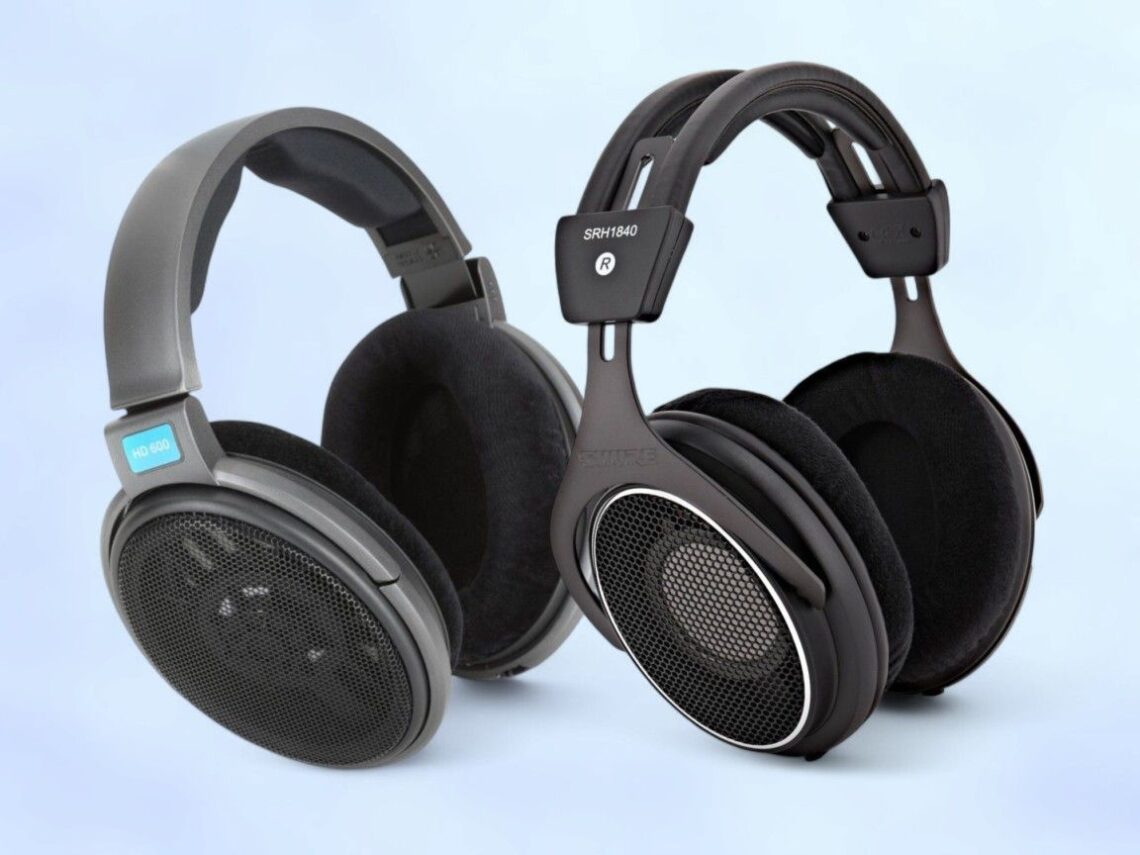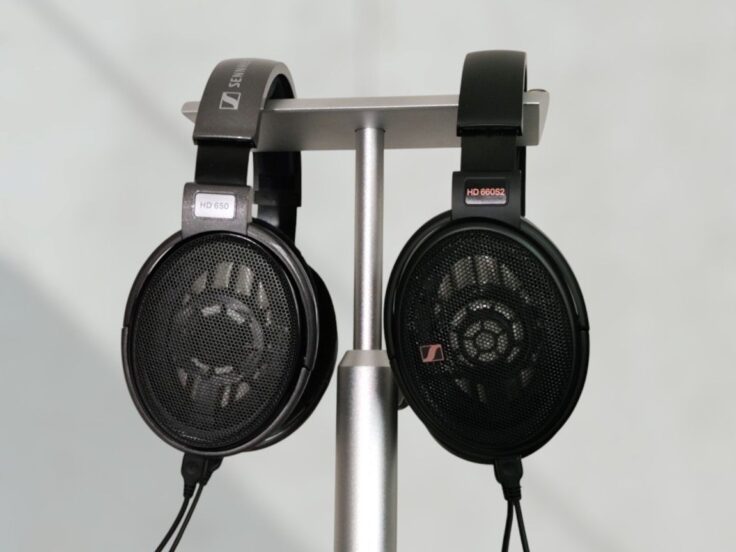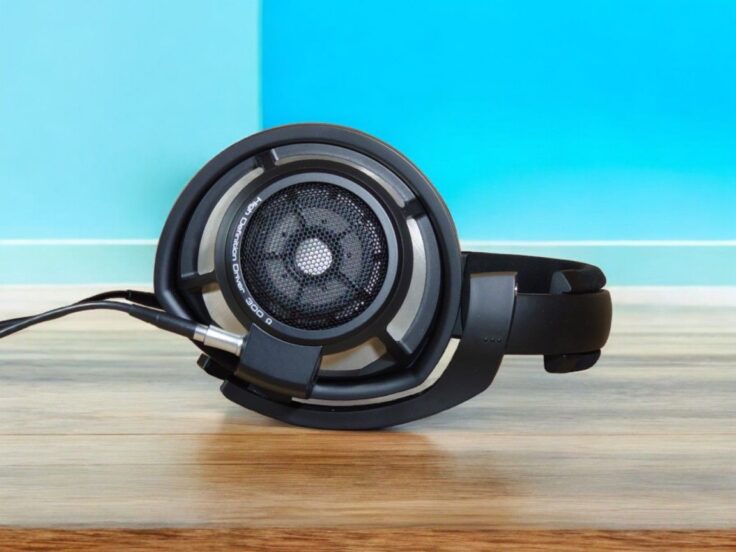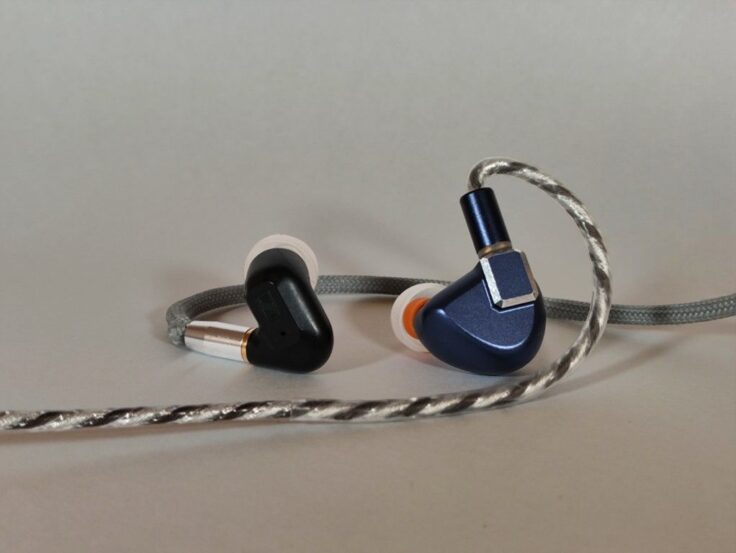Actually, this is a comparison of the HD600, the stock SRH1840, and the SRH1840 with 3rd party pads. It turned out rather interesting…
MAIN TAKEAWAY
- Both HD600 and SRH1840 are midrange-focused with weak bass quantity and quality
- HD600 is generally better than the stock SRH1840
- SRH1840 with select third-party pads outperforms both
The Sennheiser HD600 needs no introduction. It’s been a benchmark headphone for decades and remains a top choice among professionals and audiophiles. Known for its exceptional midrange and balanced sound (except for am some bass roll-off), it continues to impress listeners. It has also been very competitively priced for a long time, and continues to offer great value in 2025. There’s simply no need to alter a formula that has stood the test of time.
The Shure SRH1840, on the other hand, is something of a curiosity. It has been on the market since 2012, the prices remain high, it is widely available in professional shops, yet it receives relatively little attention in enthusiast communities like Head-Fi or Reddit.
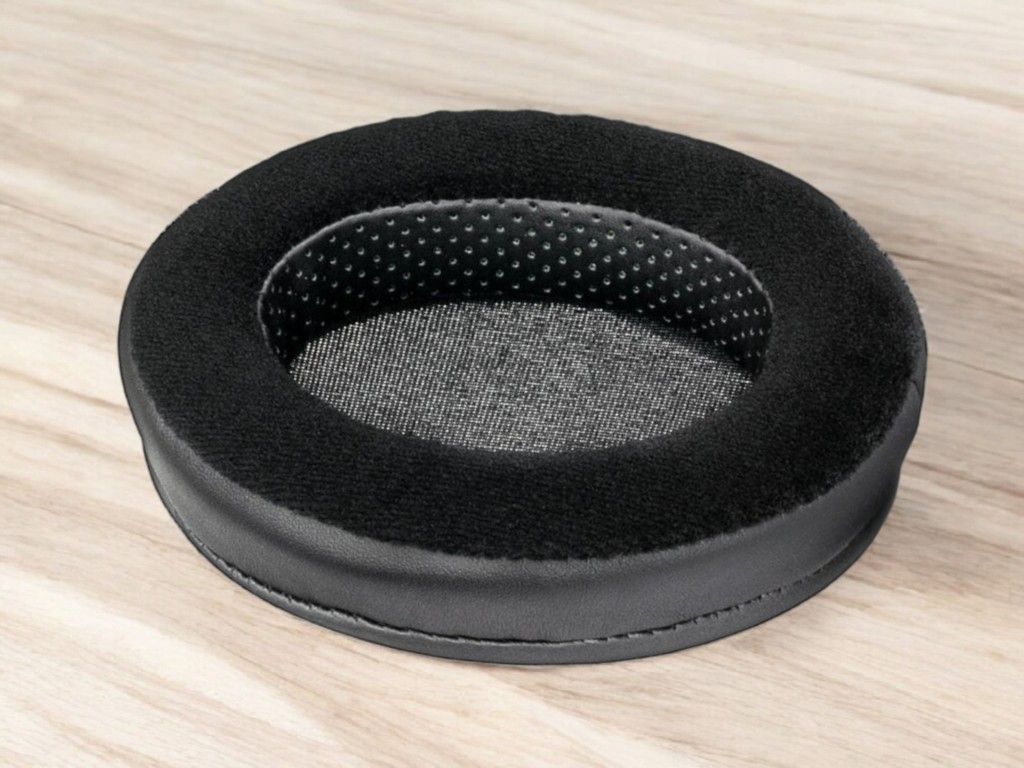
While working on my standalone review of the SRH1840, I stumbled upon a surprising revelation: a simple pad swap completely transforms the headphones for the better in all aspects, elevating their sound quality to a whole new level. I tested several pads, all featuring denser materials and foam than the stock ones. While they all sounded a lot better than the stock pads and also sounded relatively similar, my favorite turned out to be the Brainwavz Oval Hybrid Pads, which combine memory foam with a mix of materials—fenestrated faux leather on the inner side, velour on the surface, and full faux leather on the outer shell. I did NOT try pad swapping on the HD600.
This comparison review focuses on three setups: the stock HD600, the stock SRH1840, and the SRH1840 equipped with the Hybrid Pads from Brainwavz.
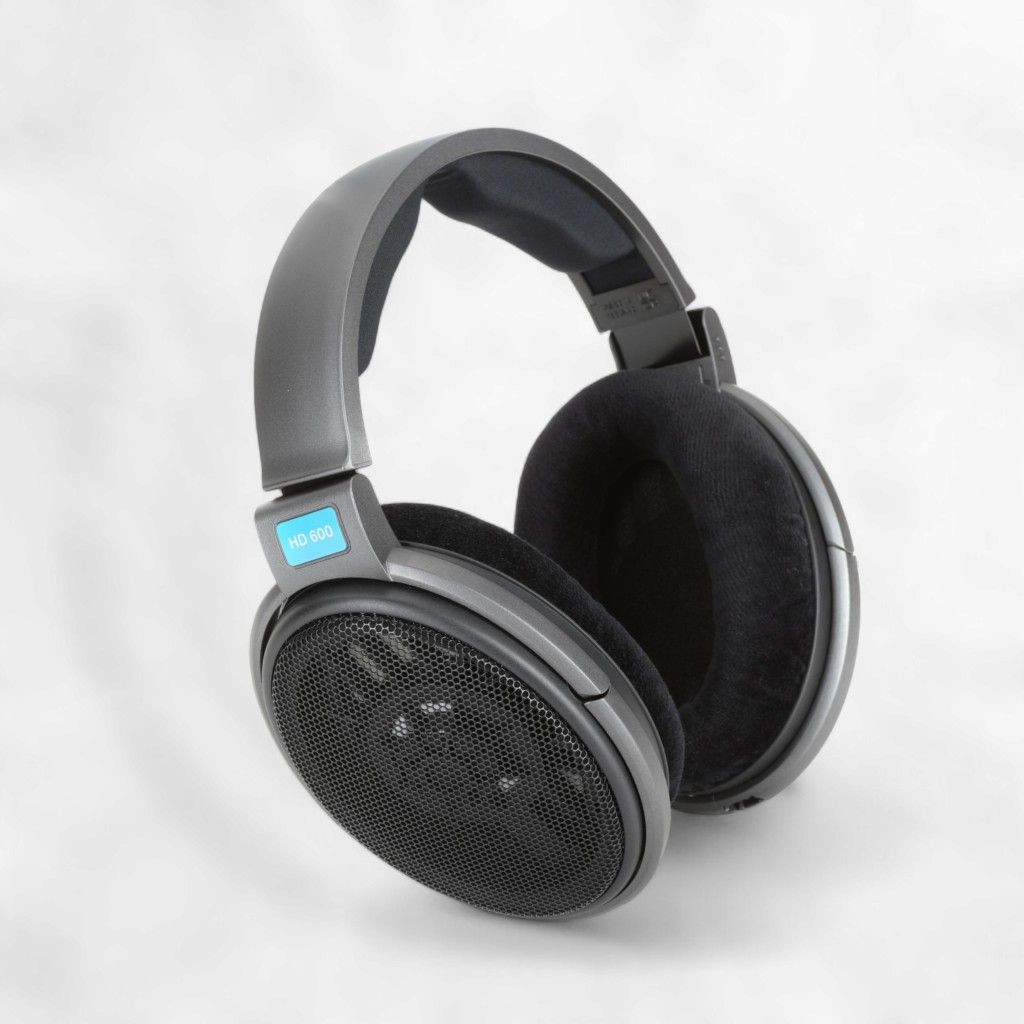
SENNHEISER HD600 SPECIFICATIONS
- Type: Over ear, open
- Driver: 38 mm dynamic
- Nominal impedance: 300 Ohms
- Sensitivity: 97 dB/mW
- Frequency response: 12 – 39000 Hz
- THD, total harmonic distortion: 0,1 %
- Contact pressure: ca. 2,5 N
- Detachable cable
- Termination plug: 3,5/6,3 mm stereo
- Cable length: 3 m
- Color: Black/Grey
- Weight w/o cable: 260 g
Current price and availability:
- Amazon: HD600
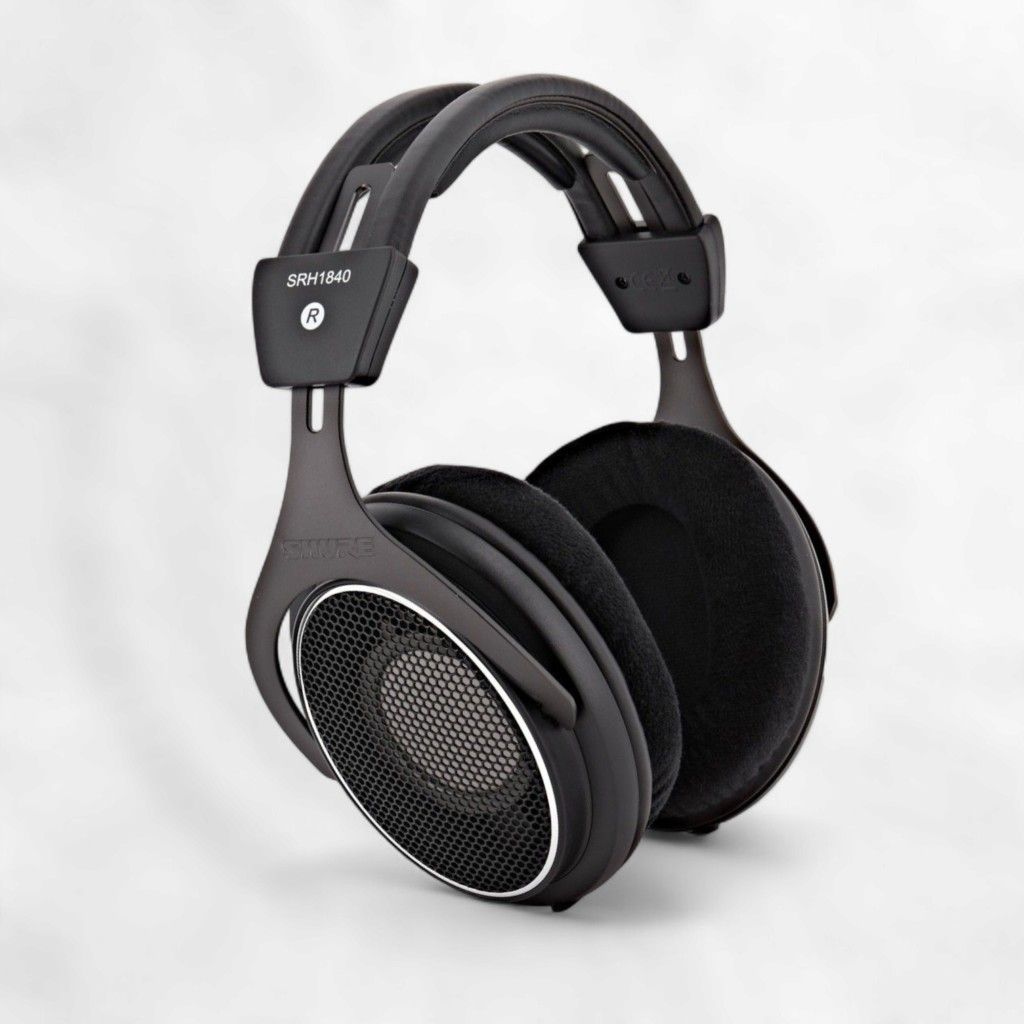
SHURE SRH1840 SPECIFICATIONS
- Type: Open-back, circumaural
- Driver: 40mm Dynamic
- Frequency Range 10 – 30,000 Hz
- Sensitivity: 96 dB/mW
- Impedance: 65 Ohms
- Maximum Input Power: 1000 mW
- adapter
- Cable: 2 x 2.1 meters (6.9 ft) straight, dual-exit, detachable oxygen-free copper
- Cable connectors on headphone cups: MMCX
- Cable termination: 3.5 mm stereo plug with threaded 1/4″ (6.3 mm) gold-plated adapter
- Replaceable ear pads
- Not collapsible
- Weight (without cable) 268g (9.4 oz)
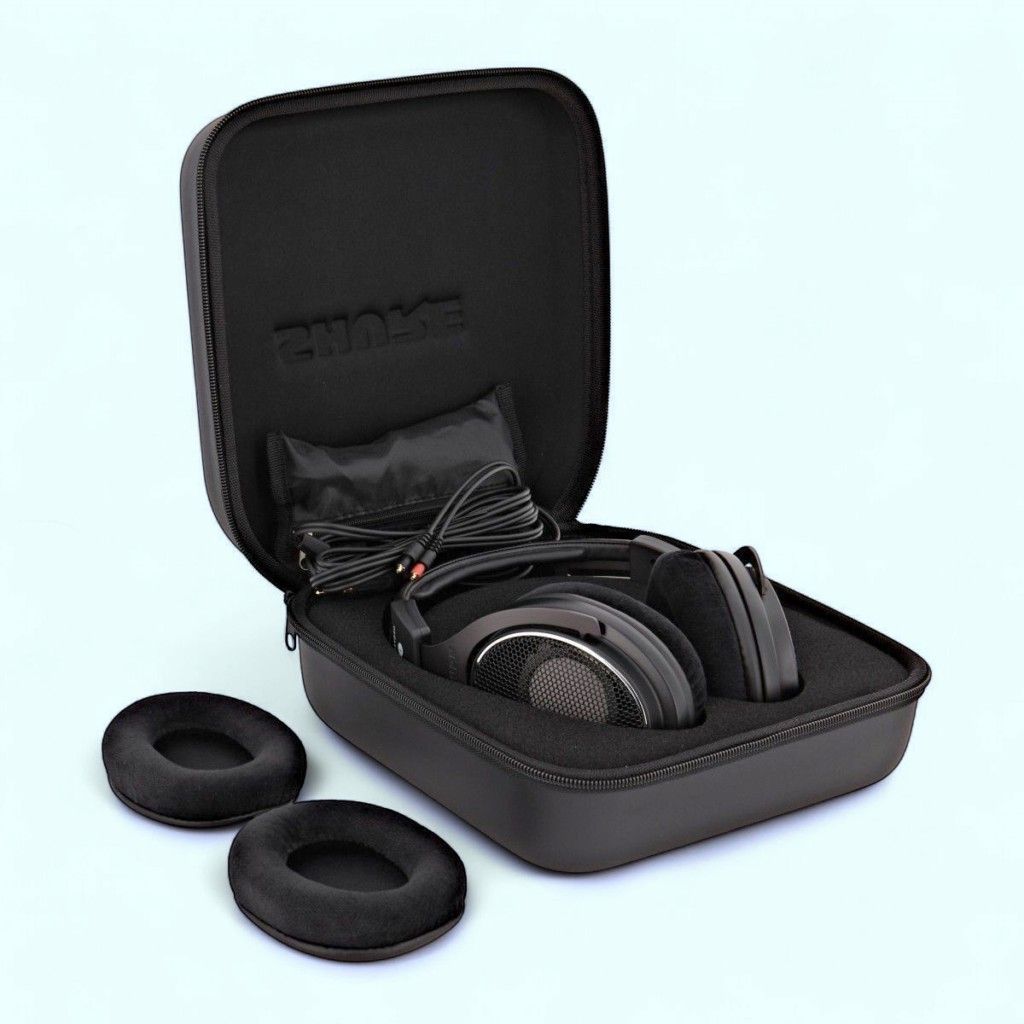
Current price and availability:
- Amazon: SRH1840
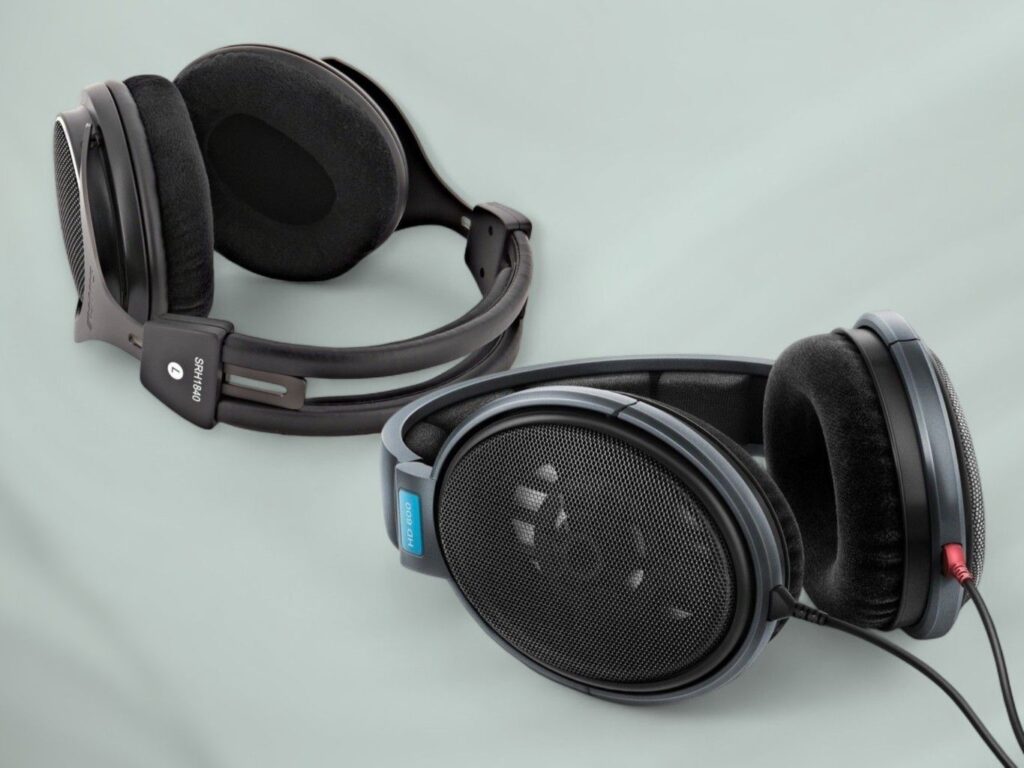
LISTENING COMPARISONS
Associated equipment:
- Amplifier: Topping A90
- DAC: RME ADI-2 DAC FS
- Stock pads only for the HD600, stock pads and Hybrid Pads for the SRH1840
The Hidden Camera by Photek
Starting with some electronica featuring challenging bass—since bass is the weak spot for both headphones—they sound quite similar overall. The stock SRH1840 feels snappier in the mids, while the HD600 offers a somewhat cleaner bass response. The SRH1840 adds a bit more texture to the bass, though. .
With the Hybrid Pads, the SRH1840 significantly improves in bass, offering a better, more linear response than the HD660. It’s not perfect, but very listenable. The midrange becomes smoother and less forward compared to the HD600, which can sound a bit coarse. Treble is cleaner as well.
Angel by Massive Attack
Another bass challenge: the HD600 again delivers cleaner bass than the stock SRH1840. The SRH1840’s mids are more pronounced—crisper and slightly drier, but not unpleasantly so.
With the Hybrid Pads, the SRH1840 offers much cleaner, better-extended bass than the HD600. The mids and treble are also cleaner, imaging improves, and the overall balance feels more accurate.
Almost Like The Blues
Again, the stock SRH1840 falls short in the bass region, with dry-sounding bass—HD600 performs better here. The vocals on the SRH1840 are very nice and distinctly different from the HD600: the HD600’s vocals have a warmer tone, while the SRH1840’s are crisper and more textured.
With the Hybrid Pads, the SRH1840 gains slightly cleaner, more pronounced, and better-extended bass. I also prefer its vocals over the HD600’s, as they sound cleaner and more refined.
Black Crow by Cassandra Wilson
Neither handles bass exceptionally well, but the HD600 outperforms the stock SRH1840, which also has less bass quantity. Both excel elsewhere: the SRH1840 is crisp and clear with dynamic percussion and articulate, natural vocals, while the HD600 sounds smoother with darker vocals—offering less dynamic punch but equal or greater detail.
With the Hybrid Pads, the SRH1840 gains more and better-extended bass, cleaner mids and highs, and improved imaging.
Some Day My Prince Will Come by Coryell Miroslav Quartet
In this bass and electric guitar duo, while the HD600 remains great, the SRH1840 sounds more alive, upfront, dynamic, and articulate. It’s crisper—but in a very pleasant and engaging way.
With the Hybrid Pads on the SRH1840, the bass is stronger and better, the midrange is warmer and smoother, and the treble more refined.
Bored by Deftones
The SRH1840 sounds crisp and snappy, with lots of texture and articulation. The HD600 sounds more laid back, smoother, and less engaging. There’s less texture on the guitars, but more low end presence.
With the Hybrid Pads, the SRH1840 no longer lacks in the lower regions and generally offers a very balanced and more nuanced sounding presentation. Everything is better than on the HD600, except maybe that the vocals aren’t as upfront in the mix.
Jambi by Tool
As above, the SRH1840 delivers music with great articulation. While it lacks deep bass, what’s there is textured and detailed. Vocals are highly articulate, and there’s a crisp, raw quality that’s very engaging. The HD600, by contrast, is darker and more laid-back—smoother and likely more true to the recording, but not necessarily more enjoyable subjectively.
With the Hybrid Pads, the SRH1840 gets the bass right and everything is much more balanced in terms of tonality. Detail and imaging is superior. Vocals stand out more on the HD600, though, as the bass is lacking in quantity.
Aquela Muhler by Vinicius Cantuaria
The SRH1840 sounds brighter with more upper midrange energy—vocals are more forward and expressive, and guitars come through crisper and clearer. The HD600, on the other hand, is smoother and darker, with slightly more bass presence and more laid-back mids.
With the Hybrid Pads, however, the SRH1840 becomes warmer with much better bass presence, smoother with more delicate mids, and better separation.
Fading Sorrow by Marcin Wasilewski Trio
The HD600 sounds very smooth and delicate, but the SRH1840 feels more alive, with a stronger sense of microdynamics and articulation. The music comes across as more energetic and engaging—crisper and more upfront, but not harsh or unpleasantly bright.
With the Hybrid Pads, however, the SRH1840 steps it up significantly, with a richer, more spacious and detailed presentation. Everything seems to sound more natural and effortless.
Tide of Trepidation by EST
The SRH1840 is very upfront, dynamic, and lively, with snappy percussion and surprisingly deep, clean-sounding standing bass. The HD600 delivers a similar overall character but comes across as slightly more laid back and polite in comparison.
With the Hybrid Pads, the SRH1840 one again transforms. Deep and full sounding, detailed bass, smooth and nuanced midrange, clean highs. It’s on another level.
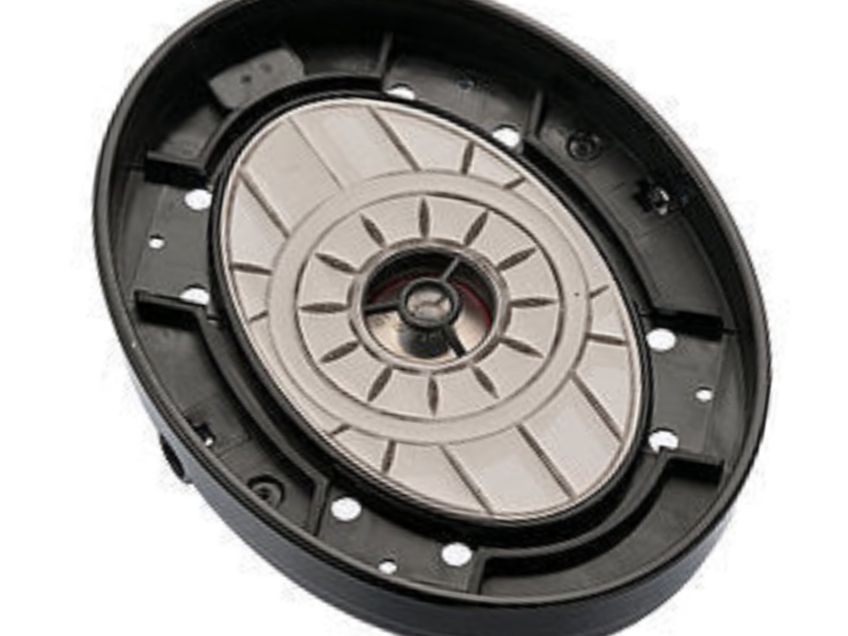
Graceful Touch by Tord Gustavsen Trio
Again, the SRH1840 offers a crisper, more upfront presentation—the piano feels more energetic, and the percussion is tighter and more defined. The HD600 remains smoother and more laid back in comparison.
And again, the Hybrid Pads make the SRH1840 better in every way and several steps up from the HD600.
Georgia Lee by Tom Waits
Both sound good—the HD600 is smoother and more laid back, as expected. The SRH1840 brings more energy and articulation, with Waits’ vocals sounding more textured, upfront, and expressive.
With the Hybrid Pads, the SRH1840 changes character, becoming very balanced and refined sounding, not focusing “only” on the midrange.
Merciful by Molvær / Endresen
This short female vocal jazz track reveals the SRH1840’s strength in clarity and articulation—vocals sound laid bare, revealing every nuance and texture. The HD600 also sounds natural and true, but presents the vocals in a smoother, less raw, and slightly more reserved manner.
Again, the Hybrid Pads make the SRH1840 more refined than the HD600, and offers a smoother and more subtle sound compared to its stock version.
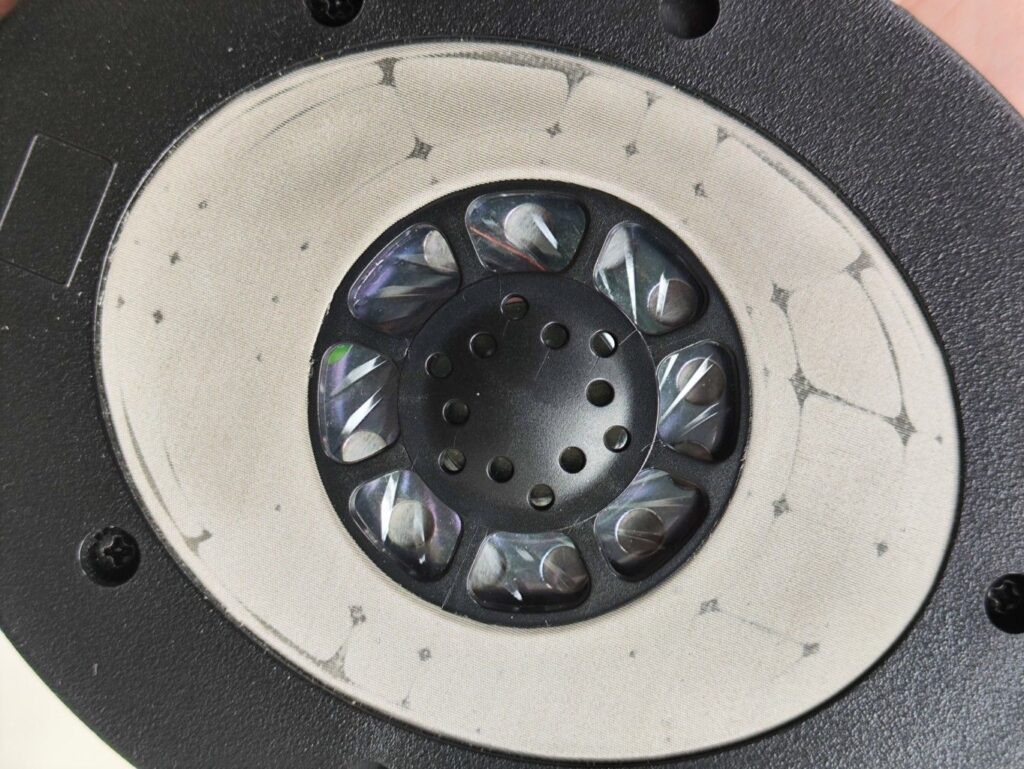
Rambling Man by Laura Marling
Guitar sounds relatively similar on both, but vocals are crisper, clearer, and richer in texture and microdynamics on the SRH1840.
With the Hybrid Pads, however, the vocals are smoother and not as upfront on the SRH1840 as in the HD600, although everything feels more refined and correct.
Sunrise by Norah Jones
The SRH1840 makes Jones’ vocals intense and upfront, very enjoyable. The bass sounds textured and polite in quantity. HD600 offers less articulate, more laid back vocals in comparison. They’re relatively similar, but the SRH1840 feels like there’s just more vocals, to put it that way.
With the Hybrid Pads, the SRH1840 gets more and better quality bass, smoother mids and better imaging. The HD600 is definitely more midrange centric, but the SRH1840 isn’t recessed sounding.
II. Allegro by Sophie de Bardonnèche, Destinées by Lucile Boulanger, Justin Taylor
Excellent timbre, energy, and articulation with the SRH1840. The HD600 also sounds great but is darker, smoother, and less articulate.
With the Hybrid Pads, the roles shift—HD600 takes the lead in midrange articulation, but the SRH1840 surpasses in detail retrieval and overall tonal balance.
Sujet tabou by Bertrand Renaudin and Olivier Cahours. Douö
This album is fascinating, it’s a duo with acoustic guitar and percussion only. The SRH1840 is very dynamic, there’s excellent articulation. The midrange just pops out from the headphones. The HD600 isn’t far behind, but it’s less energetic and slightly darker.
With the Hybrid Pads, the SRH1840 becomes more laid back, less midrange centric, with a smoother and more refined presentation.
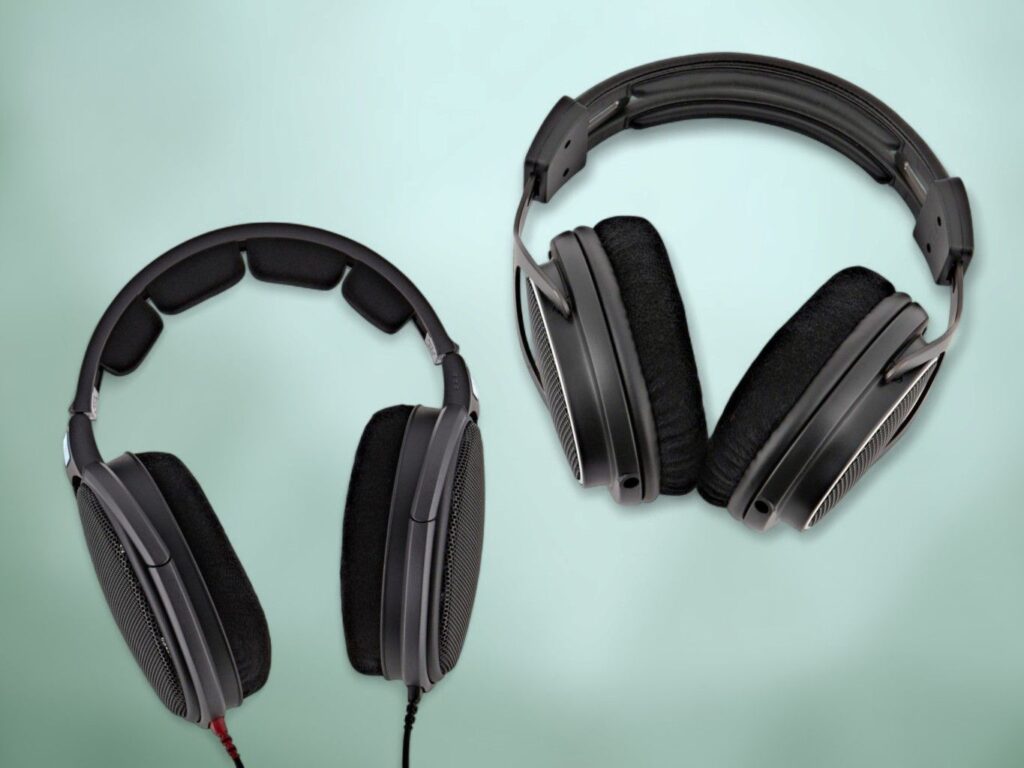
WRAPPING IT UP
Sound Signature
In stock form, both the HD600 and SRH1840 are midrange-centric headphones with smooth highs and rolled-off bass. However, they sound different, with the SRH1840 offering a crisper and more articulate midrange, similar highs, but a more distorted bass response.
With Hybrid Pads, however, the SRH1840 becomes much more balanced across the frequency spectrum, delivering astonishingly improved bass response and a significantly cleaner overall sound.
Treble
In their stock form, treble is where the HD600 and SRH1840 are most similar—both are relatively clean, nicely articulate, neither recessed nor offensive.
With the Hybrid Pads, however, the SRH1840’s treble becomes noticeably cleaner and clearer, with improved focus and accuracy, while maintaining a similar quantity.
Midrange
In stock form, both of these headphones especially excel in midrange reproduction, but in distinct ways. The HD600 is renowned for its natural, accurate, and effortlessly smooth midrange—often considered a benchmark. The SRH1840, on the other hand, delivers a more energetic and articulate midrange that feels livelier and more forward. While it may be less neutral, this character can be advantageous for mixing by revealing flaws more clearly, and it makes the SRH1840 particularly engaging and enjoyable for much (but not all) music listening.
With the Hybrid Pads, the SRH1840’s midrange becomes more naturally integrated with the bass and treble, achieving a better overall tonal balance. It also gains refinement and polish, sounding more high-fidelity, smooth, and effortless—while retaining some of its articulate character.
Bass
Both headphones exhibit bass roll-off and are certainly not standout performers in bass quality. However, the Sennheiser HD600 handles bass with greater control and less distortion. The SRH1840 with stock pads can distort noticeably on challenging tracks—more than what’s acceptable at this level—while the HD600 manages to stay cleaner under similar conditions.
With the Hybrid Pads, the SRH1840 undergoes a dramatic transformation. The bass becomes deeper, more linear, and significantly cleaner than that of the HD600. While it’s still not flawless and can distort on particularly demanding tracks, the performance is now much more competitive—on par with many similarly priced headphones.
Soundstage and Imaging
With the stock pads on both, the soundstage is open but somewhat diffuse, lacking strong three-dimensionality. Instrument separation and layering are adequate with both headphones. Considering the higher price of the SRH1840, its performance here is more disappointing compared to the HD600, which offers pretty good soundstage quality for its price point.
With the Hybrid Pads, the SRH1840 transforms completely. While the soundstage may feel a bit less wide, it becomes much better defined and more three-dimensional, with significantly superior imaging and instrument separation.
Detail, Dynamics, and Timbre
Despite its higher price, the SRH1840 doesn’t deliver more detail or nuance across the frequency spectrum. What it excels at is a unique midrange dynamic—more upfront, lively, energetic, and articulated than the already good HD600, which I however think sounds more natural. The HD600 has better bass dynamics overall, though the SRH1840 often makes the bass sound more textured, even if it lacks in quantity and cleanliness. Treble is basically the same.
With the Hybrid Pads on the SRH1840, the detail level surpasses the HD600, offering very natural timbre across the spectrum. Bass and treble dynamics improve, while the midrange becomes more polished and smooth—still articulate, more detailed and nuanced, but less edgy, never recessed.
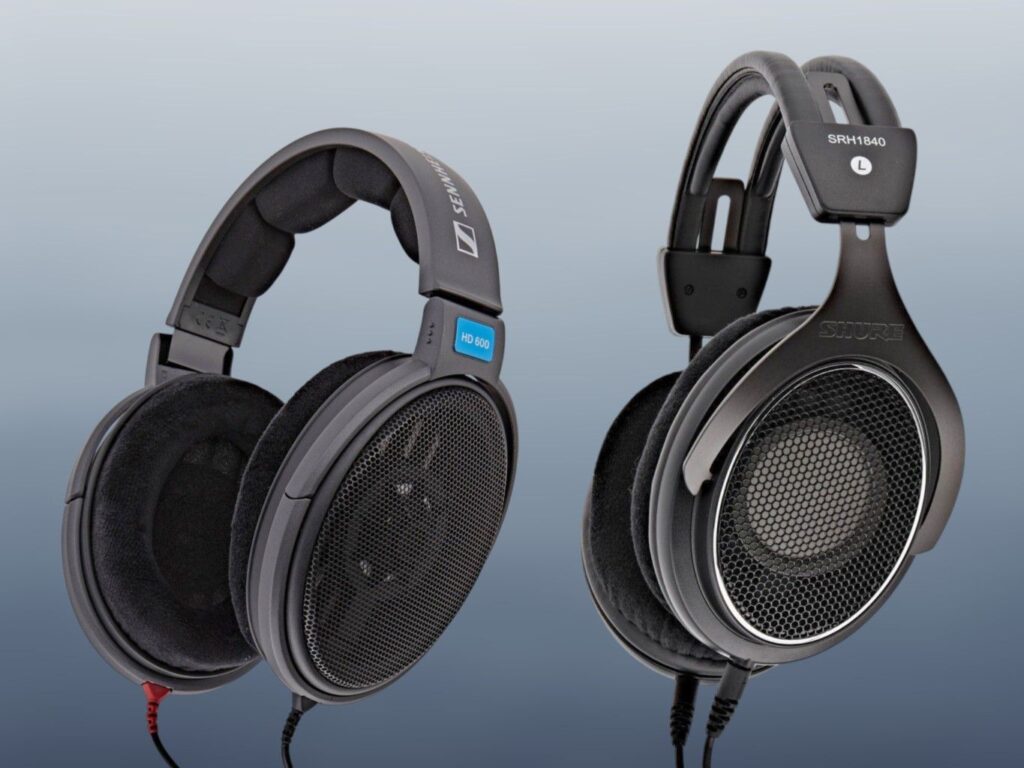
CONCLUSION
Objectively, the HD600 is a better headphone than the stock SRH1840, regardless of price. It offers superior bass quality with less roll-off, a clean mid-range, and treble performance that’s essentially on par with the SRH1840. Soundstage and imaging are also comparable. However, the SRH1840 does have one notable advantage: an exceptionally dynamic and articulate mid-range that may justify the extra cost for those who prioritize that particular quality.
It’s surprising that Shure maintains the high price of the SRH1840 without having improved its underwhelming detail retrieval and noticeably lacking bass performance with updated versions. While the midrange is captivating in its own explicit and energetic way, it isn’t necessarily more detailed—just different. And that difference alone doesn’t justify the higher price, especially when the bass performance still falls short of the HD600, a headphone already known for its bass roll-off.
To be clear, in its stock form, I would definitely recommend the HD600 over the SRH1840, even if they were priced the same.
That said, swapping in the Brainwavz Hybrid Pads on the Shure SRH1840 completely transforms it. The SRH1840 with the Hybrid Pads delivers noticeably better performance across the board and even surpasses the HD600 by a wide margin. What was once a headphone with lackluster overall performance—redeemed only by a touch of midrange magic—turns into a remarkably well-balanced set with excellent bass, mids, and treble. It’s become one of my top picks in this price range. Why Shure hasn’t introduced something like this themselves is beyond me, but the difference is undeniable. The stock pads severely hold the SRH1840 back.
Thanks for reading. You can support us by purchasing anything using any of our affiliate links.
Current price and availability:
Any purchase you make on Amazon or Linsoul with any of our affiliate links will give us a small provision at no cost to you.
We only get a provision for items that are not returned, so there’s no incentive for us to recommend something that’s not good.
Linsoul : Headphones, Earbuds, Wireless Earbuds, Desktop DAC/AMP, Portable DAC/AMP, Digital Audio Players,
Amazon: Headphones, IEMs, Headphone Amplifiers, Home Audio or Anything else.
.
If you enjoyed this article or other content on The Headphoneer, you might consider leaving a small donation to keep this website up and running. No donation is too small. Thanks for supporting us!
If you like our work please follow us on Instagram, Facebook and Twitter , it will help us grow. Sharing is caring 🙂


